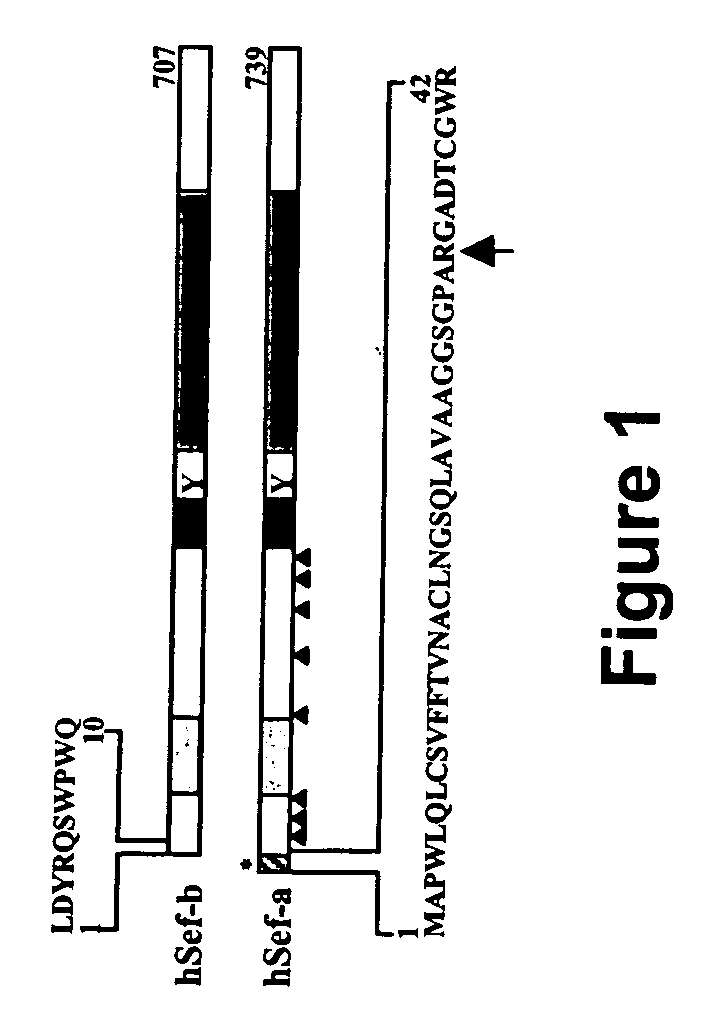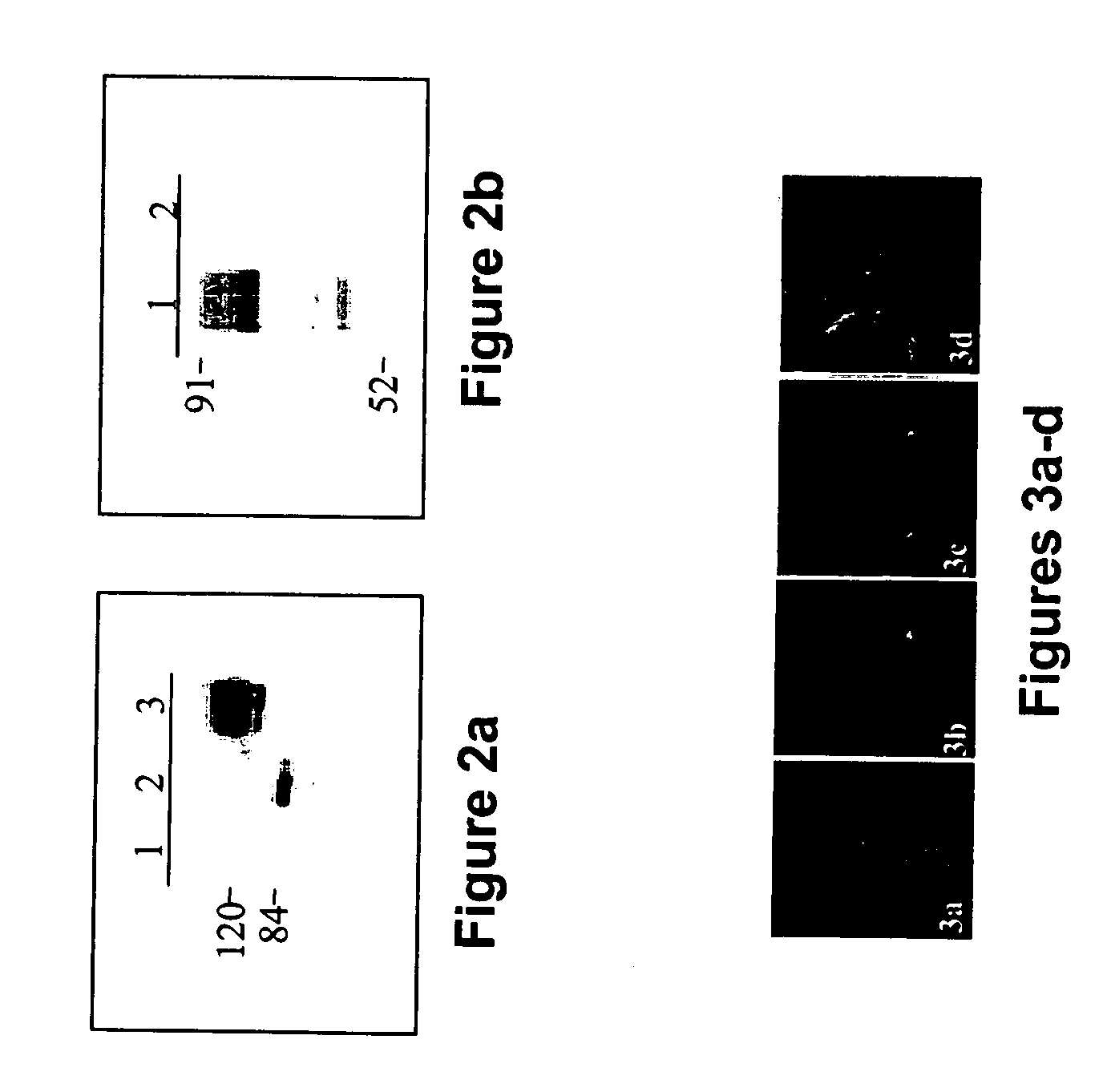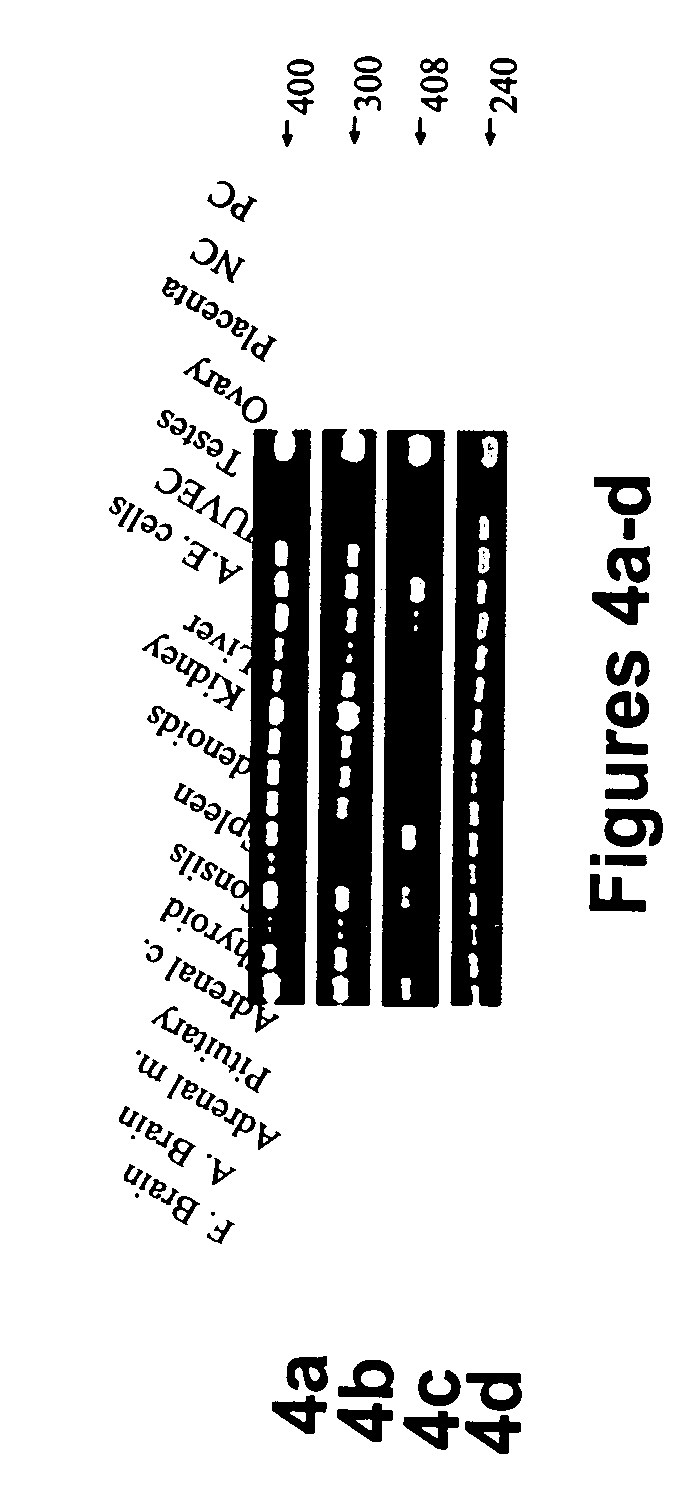Human Sef isoforms and methods of using same for cancer diagnosis and gene therapy
a human sef and isoform technology, applied in the field of polypeptides and polynucleotides expressing the human sef bd isoform, can solve the problems of inability to use such drugs, unclear mechanisms by which such agents exert their anti-tumor effect, and no studies have suggested using sef expression for cancer staging, etc., to inhibit fgf and pdgf rtk signaling, increase tumor malignancy, and suppress hs
- Summary
- Abstract
- Description
- Claims
- Application Information
AI Technical Summary
Benefits of technology
Problems solved by technology
Method used
Image
Examples
example 1
Cloning of the Human Sef-b Isoform
[0226] Experimental Results
[0227] Database search revealed the presence of additional human Sef isoforms—A database search with the zfSef sequence revealed an expressed sequence tag (EST clone AL133097) containing the entire 3′-UTR of hSef and most of its coding region except for the first 170 residues. The remainder of the coding region was obtained by searching the human genome database for upstream exons of hSef and based on homology with bovine Sef (EST clone BE750478). A cDNA fragment encoding the entire open reading frame (ORF) of hSef was amplified from primary human fibroblast or human fetal brain RNA (FIG. 1a and data not shown). Human Sef has been mapped to a single locus on chromosome 3p14.3 (data not shown). Further database searches with the amino-terminal sequence of hSef revealed an EST clone from human testes that was 577 nucleotides long and contained an ORF of 122 residues. This EST clone differed from the original hSef in its am...
example 2
The Expression of Human Sef Isoforms is Differentially Regulated
[0238] To further understand the role of the newly identified hSef-b isoform, the expression pattern and function of the hSef isoforms were determined, as follows.
[0239] Experimental Results
[0240] Tissue type specific expression of human Sef isoforms—The pattern of expression of hSef isoforms in a variety of human tissues and cell lines was examined by RT-PCR. Primers were designed to amplify a region common to both hSef transcripts or to specifically amplify each transcript. All 16 samples examined were positive for Sef transcripts when amplified with the primers from the common region of Sef isoforms (FIG. 4a). As is shown in FIG. 4b, hSef-a transcript was differentially expressed in 15 samples; HSef-a transcript was highly expressed in both fetal and adult brain, pituitary, tonsils, spleen, adenoids, fetal kidney, liver, testes and ovary, and moderate levels were detected in primary aortic endothelial cells, human...
example 3
Human Sef-B Isoform Inhibits Proliferation of OF NIH / 3 T3 Cells and Interferes with Human HEK 293 Cell Growth
[0241] The different biochemical properties and subcellular localization of the two hSef isoforms raised the question whether hSef-b can inhibit FGF biological activity similar to hSef-a. NIH / 3T3 cells were chosen to study the effect of hSef-b on biological responses to FGFs since they proliferate in response to various members of the FGF family, and have been extensively utilized as a model to study oncogenesis, regulation of cell proliferation and growth factor-mediated signaling. In addition, preliminary RT-PCR analyses revealed that NIH / 3T3 cells express the mouse-Sef gene (data not shown). To study the effect of hSef-b on NIH / 3T3 proliferation, cells were transfected with an expression vector containing the hSef-b coding sequence and the effect of hSef-b expression on colony number and proliferation was studied, as follows.
[0242] Experimental Results
[0243] Human Sef-b...
PUM
 Login to View More
Login to View More Abstract
Description
Claims
Application Information
 Login to View More
Login to View More - R&D
- Intellectual Property
- Life Sciences
- Materials
- Tech Scout
- Unparalleled Data Quality
- Higher Quality Content
- 60% Fewer Hallucinations
Browse by: Latest US Patents, China's latest patents, Technical Efficacy Thesaurus, Application Domain, Technology Topic, Popular Technical Reports.
© 2025 PatSnap. All rights reserved.Legal|Privacy policy|Modern Slavery Act Transparency Statement|Sitemap|About US| Contact US: help@patsnap.com



